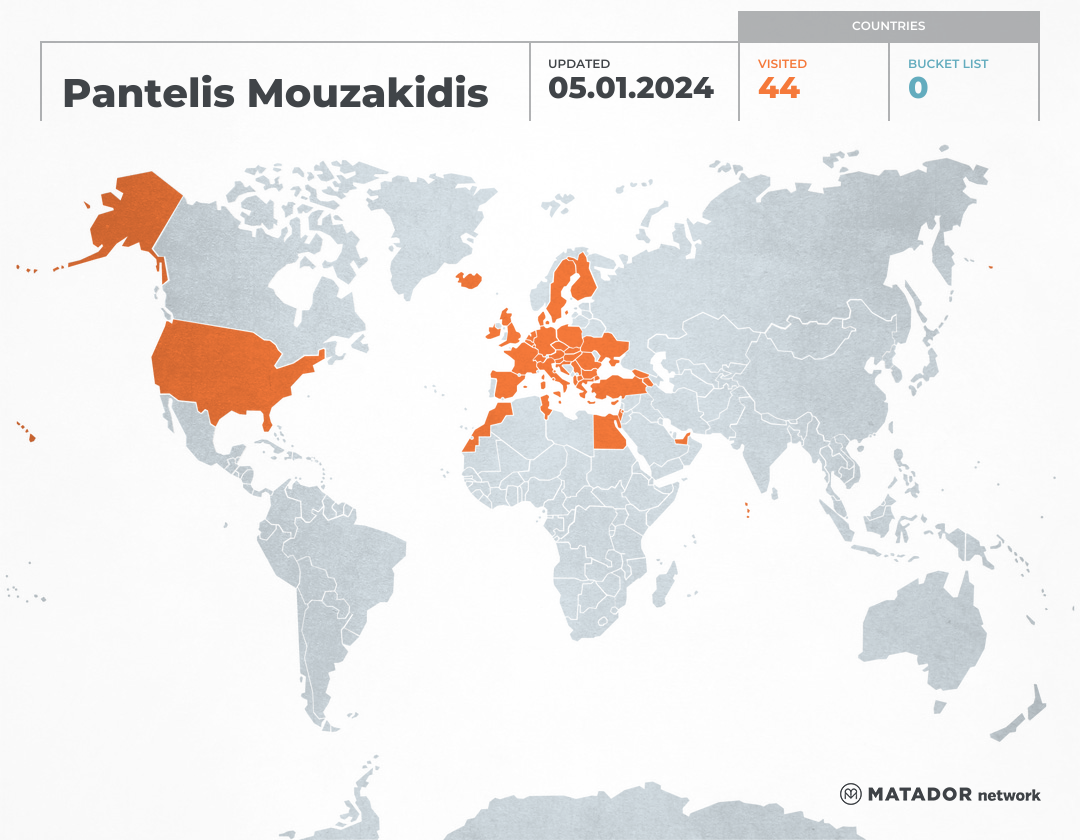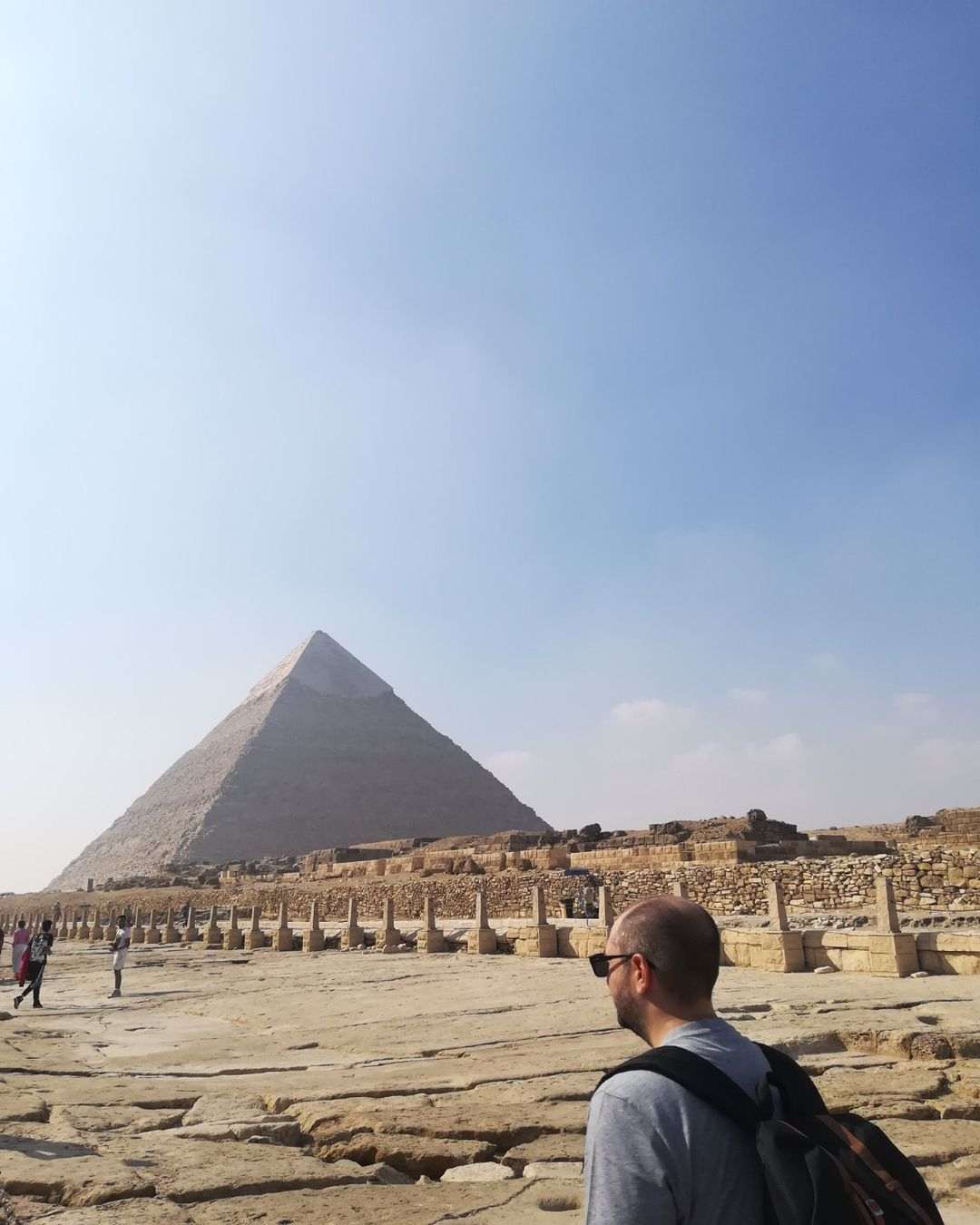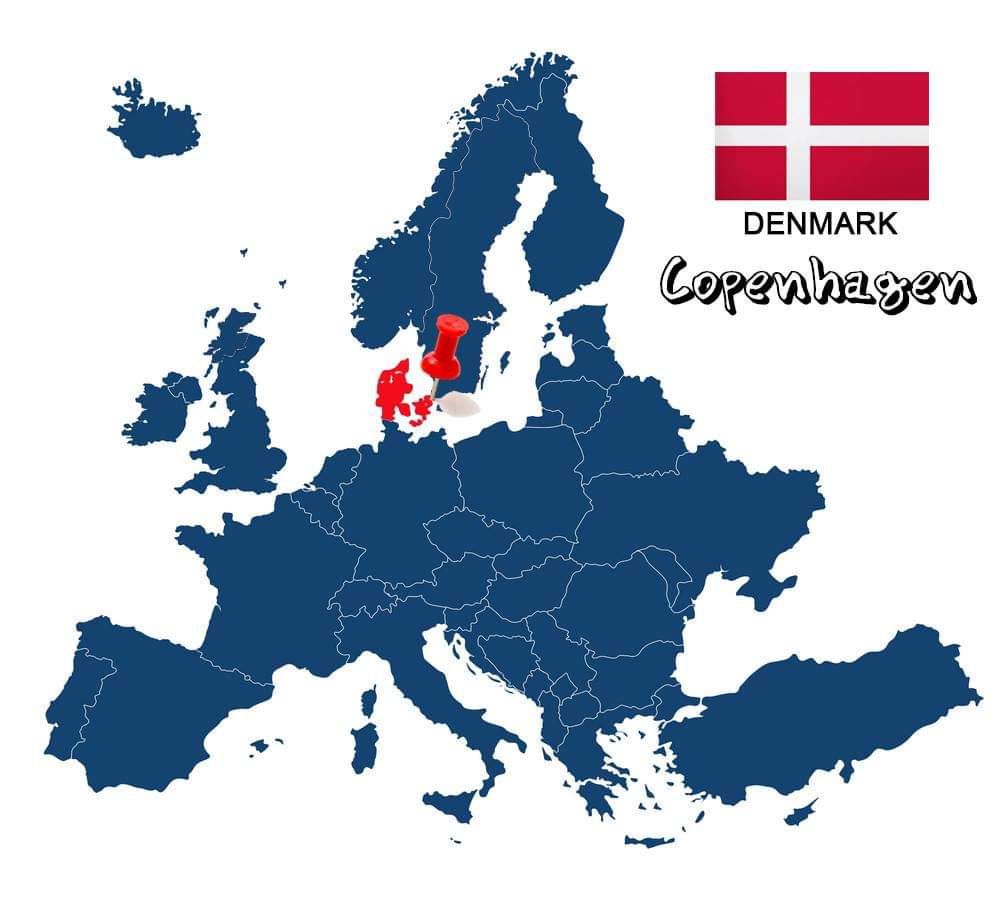
As a child, I slept and woke up to the tales of Hans Christian Andersen, so that the images of the heroes and the beautiful landscapes he narrated remained etched in my subconscious. Growing up, I realized that most of these places were not entirely fantastic, but were real parts of the birthplace of the Danish storyteller, Copenhagen. Combined with the fact that the Danish capital is one of the hottest destinations in the last two years, I decided to visit it and the end I was completely satisfied.
A few words about the city
Copenhagen is the capital and most populous city of Denmark, with its urban population reaching 1,295,686 residents, while in the wider metropolitan area 2,016,285 inhabitants. It is located on the eastern side of the island of Shjellan, 42 km northwest of Malmo in Sweden and 164 km northeast of Odense. The name of the city reflects its origin as a place of trade and port, since the original name, from which the modern Danish name comes, was Køpmannæhafn, which means "Merchants Port", often simply Hafn or Havn. There lived the most famous storyteller, Hans Christian Andersen, who wrote his dark tales taking inspiration from the inexhaustible beauty of the Danish capital. So I have chosen for you, what I consider to be worthy of attention for someone who is visiting the city for the first time.
Nyhavn
Nyhavn is the most recognizable and most photographed image of Copenhagen. It is a complex of colorful buildings of the 17th century, located right in front of the sea. These colorful little houses are made of wood, brick and lime, while the oldest house, number 9, dates back to 1661. In a free translation Nyhavn means something like "New canal", as it was the last canal opened in the 17th century to connect the port with the city center. There are dozens of restaurants, bars and cafes, but you will see many Danes enjoying their beers sitting outside, indifferent to the weather. Finally, Hans Christian Andersen lived in this part of the city for about 20 years, writing some of his most famous works.
Den lille havfrue- Kastellet
The Port of Copenhagen is a must stop for every “self-respecting visitor’, as there are two of the most important sights of the city. The first is none other than its symbol, he Little Mermaid (Den lille havfrue). Everyone wonders how it is possible for a tiny bronze statue just 1.25 meters high to be so popular, but it attracts thousands of visitors every day who want to be photographed with it. It is about the heroine of the city's most famous child, the storyteller Andersen, sitting on a rock and welcoming anyone who comes on board. The initiator and financier of the statue is Carl Jacobsen, son of the founder of the Carlsberg brewery, as a gesture of gratitude to his beloved city.
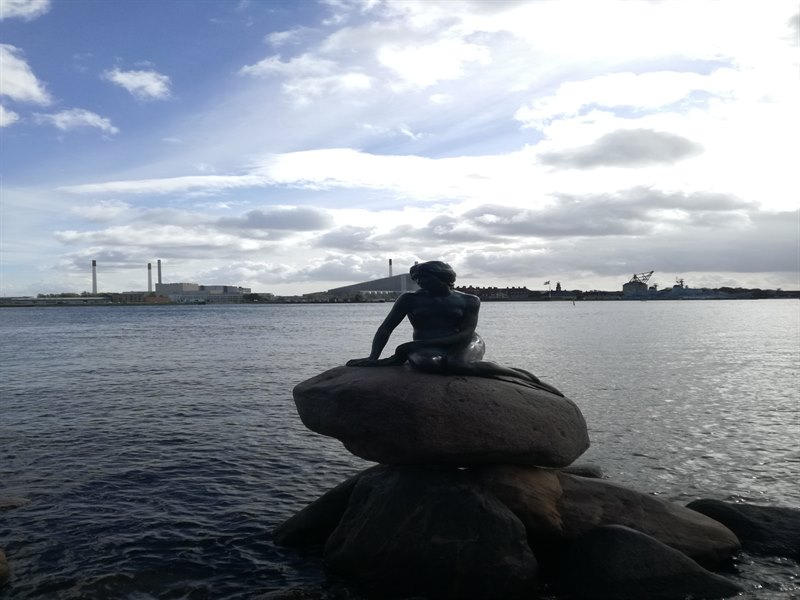
The second attraction located in the port is Kastellet. A small star-shaped island that hosts the Copenhagen castle, built in 1662 and many idyllic trails to explore.
Tivoli gardens
Tivoli gardens have been operating since 1843 and are the second oldest amusement park in the world. With more than 4.5 million visitors a year, it is also the most visited theme park in Scandinavia, as well as the 4th most visited in the whole of Europe. In a fairytale setting of exotic architecture, historic buildings, lake, fountains and beautiful gardens, you will enjoy you will enjoy various games. First of all, the Rutschebanen, the oldest wooden roller coaster (1914) in the world; also you, will have the opportunity for foolhardy rides on Aquila, which is a giant swing with speeds that reach 4G, nostalgic carousels, excellent food, but also daily open-air concerts. The games operate mainly during the summer months, but the park also opens during the winter with special thematic programs. The entrance costs 120 Danish krone, that is about 16e.
Rosenborg Slot
Rosenborg Castle (Rosenborg Slot) is located in the northern part of the center of Copenhagen and is a Dutch Renaissance palace-castle built between 1606 and 1624. It was originally built as a summer residence, but was used by the Danish kings as a permanent royal residence until about 1710. It was then used as a temporary residence during extraordinary periods, such as in 1794 when Christiansborg Palace was burned to the ground, as well as in 1801 during the British attack. Since 1838 the castle of Rosenborg belongs to the state and opened its gates to the public. Today it hosts a museum with royal collections and visitors can also admire the impressive gardens. The entrance costs 110 krone (i.e. 14.50e), but with 155 (approximately 21e) you can get a combined ticket that includes the entrance to the Other Palace of the city, Amalienborg.
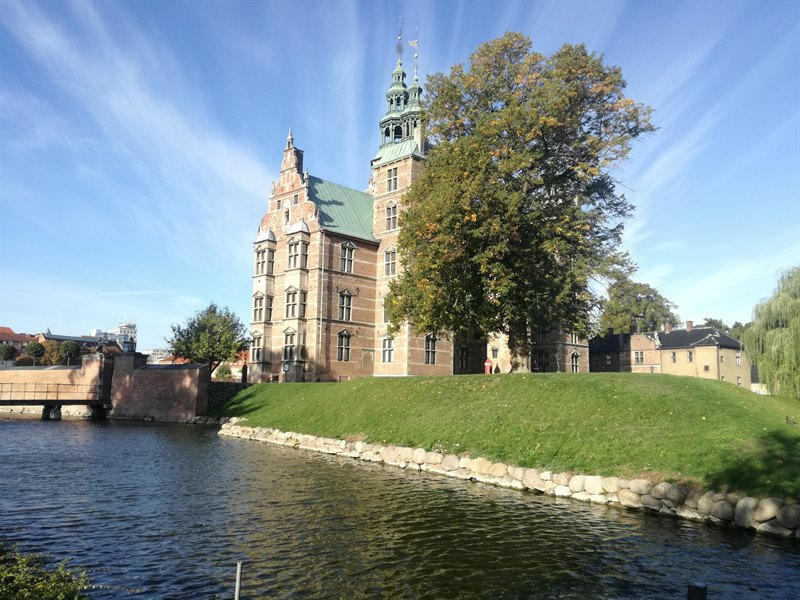
Amalienborg
Amalienborg Palace (Amalienborg) was built in the 18th century (more specifically in 1760) and is the winter residence of the Royal Family of Denmark, and is considered one of the most exquisite examples of Rococo architecture in Europe. The palace consists of four identical buildings, as originally Amalienborg was built for four noble families, but when Christiansborg Palace was burned down in February 1794, the Danish royal family bought the four buildings and moved there. In the center of the square surrounding the buildings is the statue of King Frederick V, whose task was to create the buildings. Daily at 12:00 takes place the impressive change of the Royal Guard, which rivets the gaze of thousands of visitors. Admission costs 105 krone (i.e. 14e), but I would suggest taking advantage of the offer I mentioned above.
Christiansborg Slot
The Palace of the Christian Dynasty (Christiansborg Slot) is the most impressive of all the palaces of Copenhagen. Located on Slotsholmen Island in the city centre, it is the seat of the Danish Parliament, the Supreme Court and also houses the Office of the country's prime minister. Also some other wings of the building complex are used by the Royal Family of Denmark; these are the royal reception rooms, the royal chapel and the royal stables. The Palace took its present form after the successive improvement of the original castle built in 1167, while at the beginning of the 15th century some administrative buildings were added, and in 1794 it became the main residence of the monarch. Since 1849 it hosts the seat of the Danish parliament, and the last work that gave it the neo-baroque style, was completed in 1928. Everyone can understand that this palace has a huge symbolic role for the state of Denmark, as it houses the authorities of the three most important powers, the executive, the legislative and the judiciary. Admission costs 150 krone (IE 20e) for all palace spaces, and you can also buy individual tickets if you want to see only some of them.
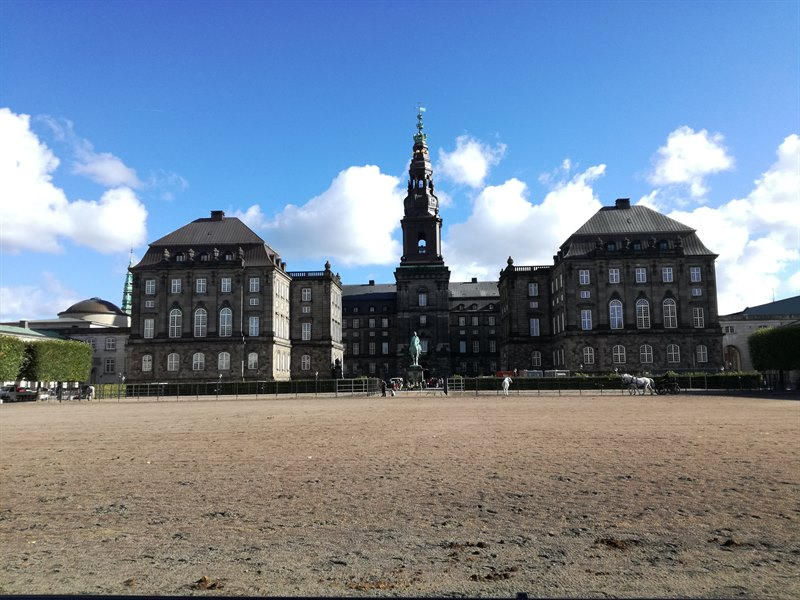
Strøget-Kongens Nytorv
Strøget is not just a large pedestrian street, but the largest commercial pedestrian street in Europe (100,000 square meters) and without a doubt the place where the heart of the city beats. Although there were many reactions when the pioneering pedestrian walk started in 1962, today the Danes are very proud of it. Along it you will find dozens of clothing and footwear shops, some of the best cafes and restaurants in Copenhagen, shops with tourist items, while you will surely find a street artist to give his performance regardless of the weather conditions.
At the end of Strøget, you will find the largest and perhaps most beautiful square of the city, the King's Square (Kongens Nytorv). The square was founded in 1670 by King Christian IV in connection with the extensive works made to expand the fortification of the city. In his honor, in the center of the Square, rises a huge statue representing the king as a warrior on horseback. It is surrounded by the building of the Royal Danish Theatre, The Charlottenborg Palace and the Thott mansion that now houses the French Embassy. Undoubtedly the square is a pole of attraction for thousands of visitors and certainly in case you tour the historical center, the road will lead you to this imposing and beautiful place.
Rundetaarn
The Rundetaarn or Round Tower is a 17th-century tower, also built by Christian IV, originally created as an astronomical observatory. To climb to the top, you have to cross an impressive winding path of 7.5 turns, which is easily climbable for everyone. During the route you will have the opportunity to get to know the surrounding buildings, as there is relevant information in each window, while some works of art are exhibited in the individual rooms. From the top you will admire the magnificent view of the whole city, and you will find that most of the buildings in the center of Copenhagen are almost the same height. Admission costs just 25 krone (about 3.5e).
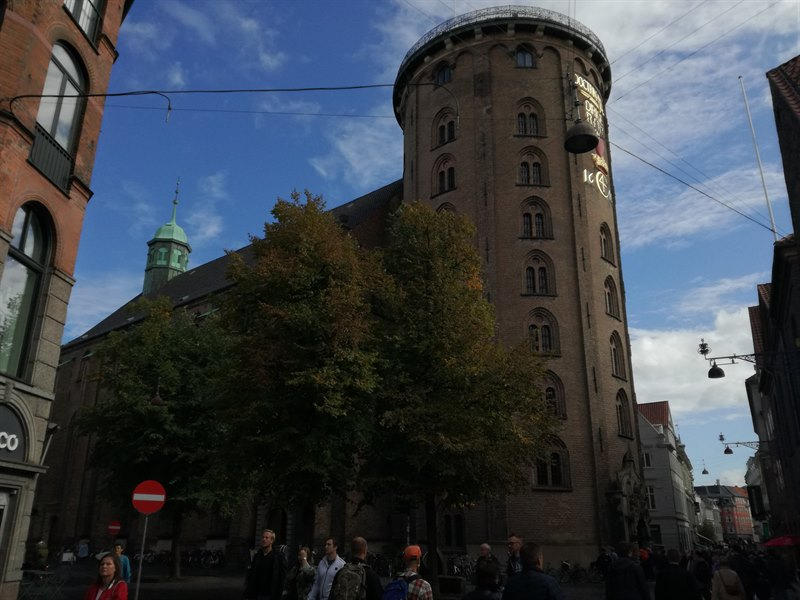
Frederiks Kirke- Vor Frue Kirke
In the city you will find several churches, as the religious part is particularly intense in Denmark. Most of them are almost identical, built with red bricks and a blue-green dome, making them so commonplace. Two, however, escape from architectural stereotypes and are two of the best attractions in Copenhagen. The first is the Marble Church (Frederiks Kirke). Regardless of the size of your interest in ecclesiastical, it would be good to visit this building to admire its unique architecture. It was designed in 1740 by the renowned architect Nokolai Eigtved, while the work began 9 years later and was completed 150 years later, but even so the result was dazzling. The church has the largest dome in Scandinavia, which has an opening of 31 meters and is supported by 12 huge columns; these features probably rank it very high in the list of most photographed monuments in the city.
The second church is the Cathedral of Copenhagen (Vor Frue Kirke), a temple dedicated to the Virgin Mary. The current version of the church was designed by the architect Christian Frederik Hansen (1756-1845), in neoclassical style and was completed in 1829. Externally it resembles an ancient Greek church, while inside there are 12 statues on both sides, one for each disciple of Christ, while the sanctuary depicts the Virgin Mary and the risen Christ.
Christiania
In 1971, a group of hippies of the time occupied a former Copenhagen camp, establishing an alternative and autonomous community with its own rules of living and administration, renouncing all state control. Since its inception, Christiania and its regime have been the subject of much debate and controversy, with a major effort to abolish it in recent years. In fact, until 2004, the state accepted the sale of light drugs, but the truth is that until now the sales continue almost undisturbedly. Today, however, the free city of Christiania has about 850 inhabitants from all walks of life, including students, musicians, artists, academics, but also retirees, unemployed and homeless. Also there you will find small businesses such as carpenters, blacksmiths, a bicycle shop, cafes, restaurants, jazz and blues bars, galleries, concert venues, a bakery that operates 24 hours a day for 7 days a week and finally a small bazaar with small items. This "different way of life", the handmade houses full of graffiti, the beautiful natural landscape, plus the mystery, as photos are forbidden, attract thousands of tourists every day.
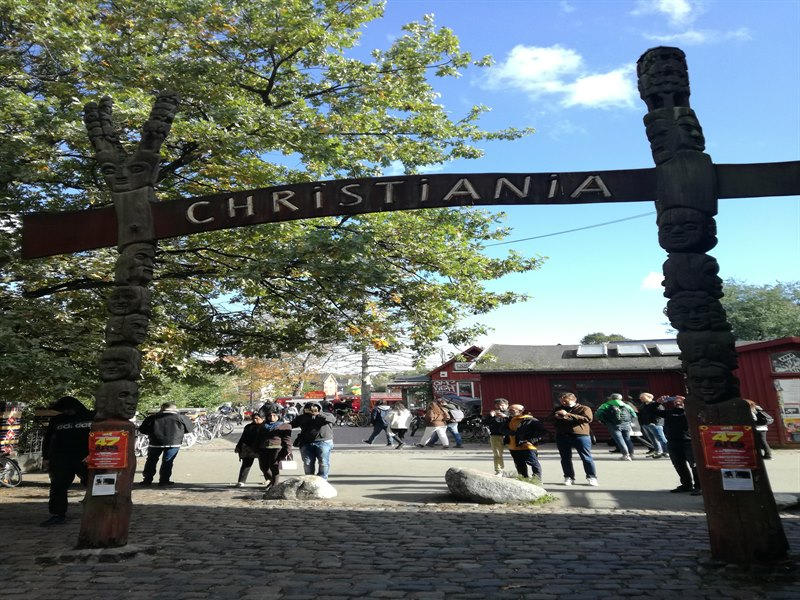
The National Museum- Ny Calsberg Glyptotek
As far as the Museums are concerned, there are two that deserve special attention and you should definitely visit. The first is the National Museum of Denmark (Nationalmuseet), housed in the dazzling "Prince's Palace", an architectural jewel of the 18th century. The Museum has three floors and is divided into two thematic categories; the first tells the history of the Danish nation from prehistoric times to the present and the second the history of various tribes from all countries and continents of the world. Admission costs 95 krone (about 12.5e), an amount worth spending if you want to know everything about Viking history and culture.
The second museum you should not miss is the Ny Calsberg Glyptotek. This is an art museum of the personal collection of the brewer Carl Jacobsen, founded in 1888. It contains one of the largest collections of sculpture, painting and antiquities in Europe. In the antiquities section you will admire Greek, Etruscan, Roman and Egyptian art of 3,500 years. Its modern collection includes 19th- and 20th-century Danish and French artwork, including the complete collection of Degas bronze statuettes, over 40 Gauguin works, 35 sculptures by Rodin, as well as an equally important collection of paintings by French Impressionists (Jacques-Louis David, Monet, Pissarro, Renoir, Cézanne) and post-impressionists (Van Gogh, Toulouse-Lautrec, Bonnard). Do not miss a stop at the beautiful "Winter Garden" of the museum. Admission costs 115 krone (approximately 15.5e), but entry is free every Tuesday.
Carlsberg Brewery
The old facilities of the legendary Danish brewery Carlsberg (1847) have been transformed into a fascinating visitor center with a total area of 10,000 square meters. There you will have the opportunity to learn about its history, about its preparation, and of course try it. If you are a beer lover (Who is not?) font, miss the chance to visit this place. It is about an hour away from the city center and there is no nearby metro station, but you can use either the train or the free buses provided by the company for tourists who want to visit it and start from the main train station. The entrance costs 100 krone (approximately 13.5e).
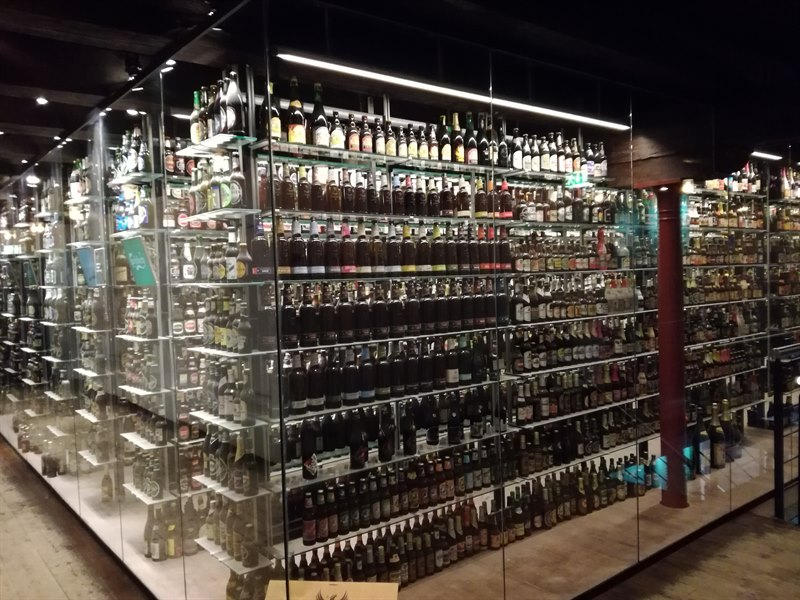
How to go
Thessaloniki is connected by air with Copenhagen and Kastrup Copenhagen Airport via Ryanair. With proper planning one can find tickets starting from 99€ round trip. Beyond that, if you want a more comfortable flight, you can choose an Aegean flight with a stopover to Athens, from 120€ round trip.
Where to stay
In Copenhagen, as in all of Scandinavia, of course, accommodation is expensive. What we call value for money does not exist, as all hotels are overpriced. My suggestion is to avoid the centre and move a little farther south, where prices are somewhat lower. So my choice is the CPH Studio Hotel, a relatively good hotel next to a metro stop. It is located in a" strategic" position since it is four stops from both the center and the airport. It features tastefully decorated rooms with a kitchen, a gym, and bicycles can be rented.
How to move
Copenhagen holds a special lead in transportation, since according to a Statista research it is the most expensive public transport in the world. The good thing about the whole situation is that you probably don't need them at all. "Is it such a small town that we will walk it?" I hear you wonder, no is the answer. The only means of transportation you will use is the bicycle. In the Danish capital, bicycles are more than cars and so both locals and tourists mainly choose this means of transportation, since the roads are well-suited for cyclists and everyone has the right cycling education. Renting a bicycle is very simple, since there are specially designed places throughout the city, where by simply downloading an application on your mobile you will have solved, with 3 to 5 euros per day, your transportation problem. However, if the weather does not allow it or you are not so excited about the idea of the bike, in the city there is also a metro with two lines that takes you to almost the entire historic center and the airport. The single ticket costs about 3.50e and the one for the airport 4.80e. In Copenhagen there is also a commuter train just outside the center, buses with regular services and of course taxis that are expensive and rarely used.
What to eat
Copenhagen has become a hot gastronomic destination in recent years, with many talented chefs rediscovering Scandinavian cuisine. There are 18 Michelin stars in the city, making it one of the most gourmet gastronomic metropolises on the planet. You have probably heard of the Noma restaurant of super star chef Rene Redzepi, where to secure a table you must make a reservation three months in advance, and be determined to leave around € 214 per person for the degustation menu, plus another 134 € per person for wine. But because your budget probably does not reach such inconceivable heights, in Copenhagen, there are many delicious delicacies in a more economical context. The most famous of these is the traditional smørrebrød, which is an open rye bread sandwich, topped with various delicacies. It is served in infinite variations of different toppings, from herring, salmon and shellfish to egg and raw beef, all hours. The Danes are also passionate about baking and confectionery. From classic rundstykker (freshly baked crispy sunflower breads) to wienerbrød (Viennese sweet breads) and typical Danish whipped cakes, the variety of pastries and sweet temptations is beyond imagination. Finally, even street food in Copenhagen goes beyond the data we know. So I suggest you try a hot dog from Doep, a canteen located next to the Round Tower for many decades and a burger from Gasolin Grill, which as you understand it is a gas station-burger.
Useful information

In Copenhagen we travel with a passport or a new type of Police ID, where the details are indicated in Latin characters.
In Copenhagen the language used is, of course, Danish. But the majority, even older people, speaks English, so ask for clarification in English.
The currency of the country is the Danish krone (Dansk Krone), and its exchange rate at the moment is 1€ = 7.46 DKK.
Convert your money either in Greece, or in exchange markets away from the center, as those located in the tourist places hold a very large commission.
Danes make most of their transactions with plastic money, so don't be surprised if some shops don't accept cash.
Copenhagen is an hour behind Greece (GMT +2).
The Greek Embassy in Copenhagen is located at 4 Hammerensgade Street, and its phone is +45 3311 4533.
Getting to and from Copenhagen Airport is simple, since the yellow metro line ends there.
If you have time, do not miss a day trip to neighboring Malmo in Sweden. Taking a train you will pass over the beautiful and impressive Öresund Bridge, which connects the two countries and in less than an hour you will be there.
Due to its location, located in the oceanic climate zone, Copenhagen has unstable weather conditions throughout the year. The climate resembles a tropical one, as from one moment to another the sunshine can turn into a storm and hail. The most ideal time to visit the city is either the cool spring or the relatively warm summer.
Recommended excursions → Malmo, Kronmporgk, Odense
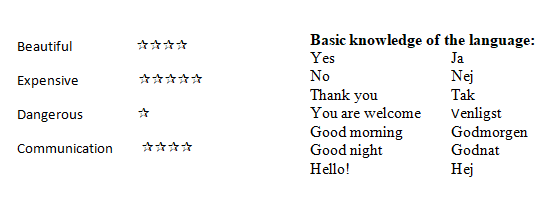
If this article seemed interesting or contributed to your quality information, then you can like my facebook page: o_thessalonikios or follow me on instagram!
Mouzakidis Pantelis





